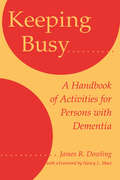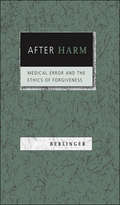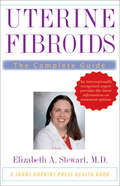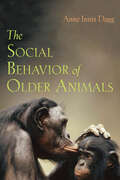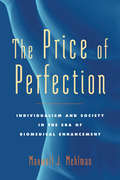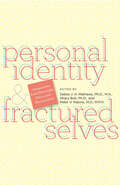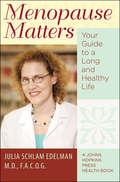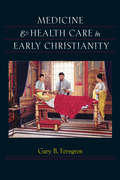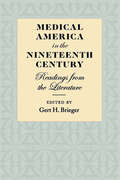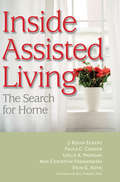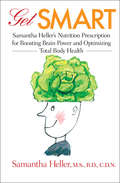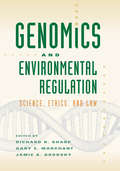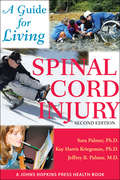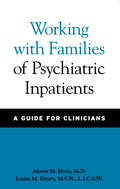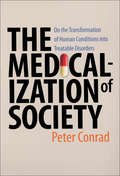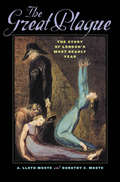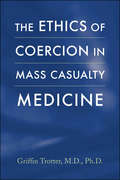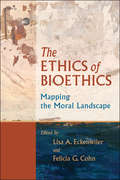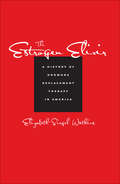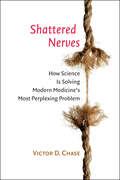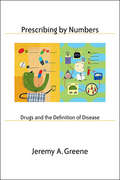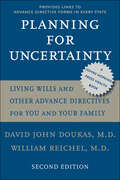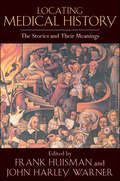- Table View
- List View
Keeping Busy: A Handbook of Activities for Persons with Dementia
by James R. DowlingAlthough very little can be done to alter the course of dementia, much can be done to maximize the quality of life of people with the condition. Research as well as practical experience suggest that behavior management, especially through programs that provide meaningful and constructive activity, is currently the most effective treatment.In Keeping Busy, James Dowling describes a variety of activities designed to bring meaning and enjoyment to the lives of persons with dementia. The activities are organized by general categories such as music, exercise, horticulture, pets, humor, and social events. The largest section deals with communication and includes word games that help people strengthen their remaining verbal skills. The description of each activity includes step-by-step instructions, as well as tips on how to adapt it for small or large groups, for individuals at home or in an organization, or people who are bedridden.
After Harm: Medical Error and the Ethics of Forgiveness
by Nancy BerlingerMedical error is a leading problem of health care in the United States. Each year, more patients die as a result of medical mistakes than are killed by motor vehicle accidents, breast cancer, or AIDS. While most government and regulatory efforts are directed toward reducing and preventing errors, the actions that should follow the injury or death of a patient are still hotly debated. According to Nancy Berlinger, conversations on patient safety are missing several important components: religious voices, traditions, and models. In After Harm, Berlinger draws on sources in theology, ethics, religion, and culture to create a practical and comprehensive approach to addressing the needs of patients, families, and clinicians affected by medical error. She emphasizes the importance of acknowledging fallibility, telling the truth, confronting feelings of guilt and shame, and providing just compensation. After Harm adds important human dimensions to an issue that has profound consequences for patients and health care providers.
Uterine Fibroids: The Complete Guide (A Johns Hopkins Press Health Book)
by Elizabeth A. StewartProviding the most reliable and up-to-date information on this very common and difficult disorder, Dr. Stewart helps women understand uterine fibroids and make the best possible choices about their care.You've called in sick today. Your back and legs hurt. Your abdomen is bloated and more than a little uncomfortable. You are having your period, and the bleeding is so heavy you can't even think about leaving the house. You have uterine fibroids.One in every four women see their lives affected by uterine fibroids, which can cause heavy bleeding, abdominal bloating, pain, and infertility. The symptoms can be mildly annoying or life altering in severity. Until recently, hysterectomy was the only way to cure fibroids, and each year more than 200,000 hysterectomies are performed in the United States to treat these noncancerous growths. But hysterectomy isn’t always the best solution. The procedure can be devastating for women who were planning to get pregnant, and it is a significant surgery for anyone. In this comprehensive and compassionate guide, Dr. Elizabeth A. Stewart helps women understand the treatment options now available.An internationally recognized expert on fibroids, Dr. Stewart describes all the available medical and surgical treatments as well as alternative and complementary therapies. In addition to hysterectomy, she explains uterine artery embolization (UAE), noninvasive focused ultrasound (FUS), and innovative hormone treatments. Simple diagrams and photographs illustrate the condition—and its treatment. Dr. Stewart encourages women with fibroids to learn as much as they can before choosing a treatment plan. Providing the most reliable and up-to-date information on this very common and difficult disorder, she helps women understand uterine fibroids and make the best possible choices about their care.
The Social Behavior of Older Animals
by Anne Innis DaggHow do young and old social animals view each other? Are aged animals perceived by others as weaker? Or wiser? What is the relationship between age and power among social animals?Taking a cue from Frans de Waal’s seminal work examining the lives of chimpanzees, Anne Innis Dagg in this pioneering study probes the lives of older mammals and birds. Synthesizing the available scientific research and anecdotal evidence, she explores how aging affects the lives and behavior of animals ranging from elk to elephants and gulls to gorillas, examining such topics as longevity; how others in a group view senior members in regard to leadership, wisdom, and teaching; mating success; interactions with mates and offspring; how aging affects dominance; changes in aggressive behavior and adaptability; and death and dying. At once instructive and compelling, this theme-spanning book reveals the complex nature of maturity in scores of social species and shows that animal behavior often displays the same diversity we find in ourselves.
The Price of Perfection: Individualism and Society in the Era of Biomedical Enhancement (Bioethics)
by Maxwell J. MehlmanFew would question the necessity of artificial limbs for amputees. But what of surgery to lengthen the legs of children who are merely shorter than average? Hardly anyone would challenge the decision to prescribe Aricept to people with dementia. But is it acceptable to give the same medication to airline pilots seeking sharper mental focus on long-haul flights? Humans have engaged in biological self-improvement since long before recorded history, from the impotence-curing wild lotus brew of the ancient Egyptians to the herbal energy drink favored by early Olympians. Now biomedical enhancements are pushing the boundaries of possibility and acceptability. Where do we draw the line? How do we know the true ramifications of pioneering medicine? What price are we willing to pay for perfection? Maxwell J. Mehlman’s provocative examination of these issues speaks to fundamental questions of what it means to be human. He finds public officials ill-equipped to handle the ethical, scientific, and public policy quandaries of biomedical enhancement. Instead of engaging difficult questions of morality, access, fairness, and freedom, elected officials have crafted toothless and counterproductive laws and regulations. Mehlman outlines policy options to boost the societal benefits and minimize the risks from these technologies. In the process, he urges the public to face the ethical issues surrounding biomedical enhancement, lest our quest for perfection compromise our very humanity.
Personal Identity and Fractured Selves: Perspectives from Philosophy, Ethics, and Neuroscience
by Debra J. H. Mathews, Hilary Bok, and Peter V. RabinsThis book brings together some of the best minds in neurology and philosophy to discuss the concept of personal identity and the moral dimensions of treating brain disease and injury. The contributors engage a crucial question: When an individual’s personality changes radically because of disease or injury, should this changed individual be treated as the same person?Rapid advances in brain science are expanding knowledge of human memory, emotion, and cognition and pointing the way toward new approaches for the prevention and treatment of devastating illnesses and disabilities. Through case studies of Alzheimer disease, frontotemporal dementia, deep brain stimulation, and steroid psychosis, the contributors highlight relevant ethical and social concerns that clinicians, researchers, and ethicists are likely to encounter. Personal Identity and Fractured Selves represents the first formal collaboration between the Brain Sciences Institute and the Berman Institute of Bioethics, both at the Johns Hopkins University. The book asks neuroscientists and philosophers to address important questions on the topic of personal identity in an effort to engage both fields in fruitful conversation. Contributors: Samuel Barondes, M.D., University of California, San Francisco; David M. Blass, M.D., Johns Hopkins University School of Medicine; Patrick Duggan, A.B., Johns Hopkins Berman Institute of Bioethics; Ruth R. Faden, Ph.D., M.P.H., Johns Hopkins Berman Institute of Bioethics; Michael S. Gazzaniga, Ph.D., University of California, Santa Barbara; Guy M. McKhann, M.D., Johns Hopkins University School of Medicine; John Perry, Ph.D., Stanford University; Carol Rovane, Ph.D., Columbia University; Alan Regenberg, M.Be., Johns Hopkins Berman Institute of Bioethics; Marya Schechtman, Ph.D., University of Illinois at Chicago; Maura Tumulty, Ph.D., Colgate University
Menopause Matters: Your Guide to a Long and Healthy Life (A Johns Hopkins Press Health Book)
by Julia Schlam EdelmanMenopause Matters is a complete guide for improving a woman's physical and mental health from age 35 and on. Gynecologist and menopause specialist Dr. Julia Schlam Edelman has helped thousands of women feel better and enjoy healthier lives. Scientifically sound and clinically tested, Dr. Edelman's advice is a welcome alternative to the often misleading, conflicting, and confusing sound bites in media reports on women's health issues. Menopause Matters covers the full spectrum of topics of vital interest to perimenopausal and postmenopausal women: hot flashes, vaginal dryness, memory loss, mood changes, depression, hormone replacement therapy, sleep, diet, exercise, healthy sex, and contraception. In a class by itself when it comes to menopause books, Menopause Matters:• promotes informed collaboration between women and their doctors,• advises women to improve their health based on findings in respected research studies,• provides clear explanations of physiology and anatomy, and• relates stories from real women who have experienced all stages of menopause.Dr. Edelman includes prevention strategies for lowering the risks of heart disease, osteoporosis, and cancer. And her practical hints about how to take supplements and medication for maximum benefit are invaluable. Menopause Matters empowers women to be active partners with their physicians during midlife and beyond. No woman will read the book without experiencing at least one big wake-up call about how to live a happier, healthier life.
Medicine and Health Care in Early Christianity
by Gary B. FerngrenDrawing on New Testament studies and recent scholarship on the expansion of the Christian church, Gary B. Ferngren presents a comprehensive historical account of medicine and medical philanthropy in the first five centuries of the Christian era.Ferngren first describes how early Christians understood disease. He examines the relationship of early Christian medicine to the natural and supernatural modes of healing found in the Bible. Despite biblical accounts of demonic possession and miraculous healing, Ferngren argues that early Christians generally accepted naturalistic assumptions about disease and cared for the sick with medical knowledge gleaned from the Greeks and Romans.Ferngren also explores the origins of medical philanthropy in the early Christian church. Rather than viewing illness as punishment for sins, early Christians believed that the sick deserved both medical assistance and compassion. Even as they were being persecuted, Christians cared for the sick within and outside of their community. Their long experience in medical charity led to the creation of the first hospitals, a singular Christian contribution to health care.
Medical America in the Nineteenth Century: Readings from the Literature
by Gert H. BriegerStudents of the history of medicine and of American history in general will welcome this collection of thirty papers originally published in nineteenth-century medical journals and lay publications. Each highlights a specific problem or medical attitude of the period, and together they present an illuminating panorama of the medical profession and of public health in nineteenth-century America. Many of the problems faced by students, practitioners, and patients of the last century are surprisingly similar to those still being encountered today.Dr. Brieger has selected papers that illustrate the issues and developments in medical education, medical practice, surgery, hospitals, hygiene, and psychiatry. They range from Benjamin Rush's "On the Cause of Death in Diseases That Are Not Incurable," to a paper by Robert F. Weir "On the Antiseptic Treatment of Wounds, and Its Results" and an article by Stephen Smith, "New York the Unclean." The final selection, the Announcement of The Johns Hopkins Medical School, stands as a landmark that foretells the beginning of a new era.
Inside Assisted Living: The Search for Home
by J. Kevin Eckert Paula C. Carder Leslie A. Morgan Ann Christine Frankowski Erin G. RothAssisted living is the fastest-growing alternative to skilled nursing care for frail older persons in the United States. The expectations, settings, and missions of these residences are varied, making it difficult for prospective residents and their families to anticipate what it would be like to live in them. This book is a unique portal into the real world of assisted living and the key issues facing consumers, providers, and policy makers. Drawing on in-depth interviews with residents, their family members, staffers, and administrators, Inside Assisted Living opens the window on day-to-day life in six different types of assisted living residence. From “Miss Helen at Valley Glen Home” to “Mr. Sidney at Laurel Ridge,” the detailed profiles of individuals show the commonalities among the residences while highlighting the positive and negative aspects of each. The voices of those living, visiting, and working in the homes clarify the important local (social relations, staff dynamics, leadership) and national (funding, regulation, aging-in-place) challenges presented by assisted living. Introductory and concluding chapters synthesize new findings that cross the six settings and reflect issues vital to all participants. The book also features an appendix detailing the research process involved in creating the profiles.
Get Smart: Samantha Heller's Nutrition Prescription for Boosting Brain Power and Optimizing Total Body Health
by Samantha HellerA healthy body makes for a healthy brain, and this fun, creative guide is designed to help readers have both—they can be smarter, stronger, happier, and more energetic by changing a few dietary habits. Nutritionist and frequent morning talk show guest Samantha Heller has created a life raft in a sea of confusing and contradictory nutrition and diet information. Heller's Nutrition Prescription plan considers each person’s habits, budget, and food preferences when making lifestyle recommendations. Raised on white rice and beans? Switch to brown rice instead. Can’t afford fresh Atlantic salmon? Canned salmon will do just as well. Fresh vegetables unavailable at the neighborhood bodega? Frozen are just as nutritious. Heller's unique, user-friendly approach is based on the most current scientific and medical research, while her food lists, meal plans, substitutions, and recipes are easy to follow. Heller links the benefits of good nutrition to healthy brain functioning, explaining how readers can improve memory, focus, mood, mental clarity, heart health, psychological well-being, and energy levels—all through a healthy diet and regular exercise. Get Smart will motivate and empower people of all ages to change their lives.
Genomics and Environmental Regulation: Science, Ethics, and Law
by Gary E. Marchant Richard R. Sharp Jamie A. GrodskyTo reduce the deleterious effects of environmental contamination, governments across the world have enacted regulations broadly conceived for entire populations. Information arising out of the Human Genome Project and other cutting-edge genetic research is shifting the policymaking process. This fascinating volume draws on experts from academia, government, industry, and nongovernmental organizations to examine the science of genomic research as applied to environmental policy. The first section explores environmental policy applications, including subpopulation genetic profiling, industrial regulations, and standardizing governmental evaluation of genomic data. The second section assesses from multiple angles the legal framework involved in applying genomics to environmental regulation. In the third section, the contributors review closely the implications of genomic research for occupational health, from disease prevention and genetic susceptibility to toxicants, to workers’ rights and potential employment discrimination. A fourth section explores the bioethical and philosophical complications of bringing genetic data and research into nonclinical regulatory frameworks.Genomics and Environmental Regulation points to ways in which information on toxicology and genetics can be used to craft more precise and efficient regulations.
Spinal Cord Injury: A Guide for Living (A Johns Hopkins Press Health Book)
by Sara Palmer Kay Harris Kriegsman Jeffrey B. PalmerFully updated and revised, the second edition of Spinal Cord Injury is the definitive guide for people with SCI and their families. Combining first-person accounts with up-to-date medical information, the book addresses all aspects of spinal cord injury—recovery and coping, sex and family matters, transportation and housing, employment and leisure—and reviews the challenges encountered by people with spinal cord injury throughout their lives. The authors explain how spinal cord injury affects physical functioning and the impact of physical changes on emotions and social life. They offer a holistic approach to recovery that incorporates all aspects of living and emphasizes achieving optimal health, personal fulfillment, and meaningful family and social relationships. The new edition of this helpful book includes a completely revised chapter on recovery and regeneration research, stem cell research, and activity-based therapies. New information is offered on medical and rehabilitative care of children and adolescents as well as preventative health measures for people of all ages living with spinal cord injury. The book includes expanded ideas and resources for socializing, travel, sports and recreation.
Working with Families of Psychiatric Inpatients: A Guide for Clinicians
by Alison M. Heru Laura M. DruryWorking with the families of inpatients is one of the most important—and most challenging—aspects of practicing clinical psychiatry. Clinicians are responsible not only for the well-being of their patients but also for the education and guidance of the patient’s family. In this book, Alison M. Heru and Laura M. Drury offer a step-by-step guide to developing the skills needed to work successfully with patients’ families. Research data, outlined in the opening chapters, demonstrate just how essential families and evidence-based family treatment are to effective patient care. Succeeding chapters use clinical case studies to illustrate the skills necessary for the assessment and treatment of the family. Psychiatric residents will enhance their knowledge of the family as a part of the patient’s social context and learn how to conduct a family meeting, common mistakes to avoid, and when to refer the family for other assistance. The authors also describe specific strategies for intervening with difficult families and for overcoming some of the fears and anxieties common among residents when they interact with patients’ families.The authors provide valuable insights into the perspectives of families and patients and offer practical suggestions for risk management after the patient is discharged from inpatient care. Keyed to the requirements articulated by the American College of Graduate Medical Education, this handbook is a tool no psychiatric resident can do without.
The Medicalization of Society: On the Transformation of Human Conditions into Treatable Disorders
by Peter ConradOver the past half-century, the social terrain of health and illness has been transformed. What were once considered normal human events and common human problems—birth, aging, menopause, alcoholism, and obesity—are now viewed as medical conditions. For better or worse, medicine increasingly permeates aspects of daily life.Building on more than three decades of research, Peter Conrad explores the changing forces behind this trend with case studies of short stature, social anxiety, "male menopause," erectile dysfunction, adult ADHD, and sexual orientation. He examines the emergence of and changes in medicalization, the consequences of the expanding medical domain, and the implications for health and society. He finds in recent developments—such as the growing number of possible diagnoses and biomedical enhancements—the future direction of medicalization. Conrad contends that the impact of medical professionals on medicalization has diminished. Instead, the pharmaceutical and biotechnical industries, insurance companies and HMOs, and the patient as consumer have become the major forces promoting medicalization. This thought-provoking study offers valuable insight into not only how medicalization got to this point but also how it may continue to evolve.
The Great Plague: The Story of London's Most Deadly Year
by A. Lloyd Moote Dorothy C. MooteAn intimate portrait of the Great Plague of London.In the winter of 1664-65, a bitter cold descended on London in the days before Christmas. Above the city, an unusually bright comet traced an arc in the sky, exciting much comment and portending "horrible windes and tempests." And in the remote, squalid precinct of St. Giles-in-the-Fields outside the city wall, Goodwoman Phillips was pronounced dead of the plague. Her house was locked up and the phrase "Lord Have Mercy On Us" was painted on the door in red. By the following Christmas, the pathogen that had felled Goodwoman Phillips would go on to kill nearly 100,000 people living in and around London—almost a third of those who did not flee. This epidemic had a devastating effect on the city's economy and social fabric, as well as on those who lived through it. Yet somehow the city continued to function and the activities of daily life went on.In The Great Plague, historian A. Lloyd Moote and microbiologist Dorothy C. Moote provide an engrossing and deeply informed account of this cataclysmic plague year. At once sweeping and intimate, their narrative takes readers from the palaces of the city's wealthiest citizens to the slums that housed the vast majority of London's inhabitants to the surrounding countryside with those who fled. The Mootes reveal that, even at the height of the plague, the city did not descend into chaos. Doctors, apothecaries, surgeons, and clergy remained in the city to care for the sick; parish and city officials confronted the crisis with all the legal tools at their disposal; and commerce continued even as businesses shut down.To portray life and death in and around London, the authors focus on the experiences of nine individuals—among them an apothecary serving a poor suburb, the rector of the city's wealthiest parish, a successful silk merchant who was also a city alderman, a country gentleman, and famous diarist Samuel Pepys. Through letters and diaries, the Mootes offer fresh interpretations of key issues in the history of the Great Plague: how different communities understood and experienced the disease; how medical, religious, and government bodies reacted; how well the social order held together; the economic and moral dilemmas people faced when debating whether to flee the city; and the nature of the material, social, and spiritual resources sustaining those who remained.Underscoring the human dimensions of the epidemic, Lloyd and Dorothy Moote dramatically recast the history of the Great Plague and offer a masterful portrait of a city and its inhabitants besieged by—and defiantly resisting—unimaginable horror.
The Ethics of Coercion in Mass Casualty Medicine
by Griffin TrotterDisasters, both natural and manufactured, provide ample opportunities for official coercion. Authorities may enact quarantines, force evacuations, and commandeer people and supplies—all in the name of the public's health. When might such extreme actions be justified, and how does a democratic society ensure that public officials exercise care and forethought to avoid running roughshod over human rights?In The Ethics of Coercion in Mass Casualty Medicine, Griffin Trotter explores these fundamental questions with skepticism, debunking myths in pursuit of an elusive ethical balance between individual liberties and public security. Through real-life and hypothetical case studies, Trotter discusses when forced compliance is justified and when it is not, how legitimate force should be exercised and implemented, and what societies can do to protect themselves against excessive coercion. The guidelines that emerge are both practical and practicable. Drawing on core concepts from bioethics, political philosophy, public health, sociology, and medicine, this timely book lays the groundwork for a new vision of official disaster response based on preventing and minimizing the need for coercive action.
The Ethics of Bioethics: Mapping the Moral Landscape
by Lisa A. Eckenwiler, Felicia G. CohnStem cell research. Drug company influence. Abortion. Contraception. Long-term and end-of-life care. Human participants research. Informed consent. The list of ethical issues in science, medicine, and public health is long and continually growing. These complex issues pose a daunting task for professionals in the expanding field of bioethics. But what of the practice of bioethics itself? What issues do ethicists and bioethicists confront in their efforts to facilitate sound moral reasoning and judgment in a variety of venues? Are those immersed in the field capable of making the right decisions? How and why do they face moral challenge—and even compromise—as ethicists? What values should guide them? In The Ethics of Bioethics, Lisa A. Eckenwiler and Felicia G. Cohn tackle these questions head on, bringing together notable medical ethicists and people outside the discipline to discuss common criticisms, the field's inherent tensions, and efforts to assign values and assess success. Through twenty-five lively essays examining the field's history and trends, shortcomings and strengths, and the political and policy interplay within the bioethical realm, this comprehensive book begins a much-needed critical and constructive discussion of the moral landscape of bioethics.
The Estrogen Elixir: A History of Hormone Replacement Therapy in America
by Elizabeth Siegel WatkinsIn the first complete history of hormone replacement therapy (HRT), Elizabeth Siegel Watkins illuminates the complex and changing relationship between the medical treatment of menopause and cultural conceptions of aging. Describing the development, spread, and shifting role of HRT in America from the early twentieth century to the present, Watkins explores how the interplay between science and society shaped the dissemination and reception of HRT and how the medicalization—and subsequent efforts toward the demedicalization—of menopause and aging affected the role of estrogen as a medical therapy. Telling the story from multiple perspectives—physicians, pharmaceutical manufacturers, government regulators, feminist health activists, and the media, as well as women as patients and consumers—she reveals the striking parallels between estrogen’s history as a medical therapy and broad shifts in the role of medicine in an aging society.Today, information about HRT is almost always accompanied by a laundry list of health risks. While physicians and pharmaceutical companies have striven to develop the safest possible treatment for the symptoms of menopause and aging, many specialists question whether HRT should be prescribed at all. Drawing from a wide range of scholarly research, archival records, and interviews, The Estrogen Elixir provides valuable historical context for one of the most pressing debates in contemporary medicine.
Shattered Nerves: How Science Is Solving Modern Medicine's Most Perplexing Problem
by Victor D. ChaseWinner of an Honorable Mention in the 2007 American Society of Journalists and Authors Annual Writing Award in the General Non-fiction Book CategoryOnce the stuff of science fiction, neural prosthetics are now a reality. Research and technology are creating implants that enable the deaf to hear, the blind to see, and the paralyzed to move. Shattered Nerves takes us on a journey into a new medical frontier, where sophisticated, state-of-the-art medical devices repair and restore failed sensory and motor systems. In a compelling narrative that reveals the intimate relationship between technology and the physicians, scientists, and patients who bring it to life, Victor D. Chase explores groundbreaking developments in neural technology. Through personal interviews and extensive research, Chase introduces us to the people and devices that are restoring shattered lives, from implants that enable the paralyzed to stand, walk, feed, and groom themselves, to those that restore bladder and bowel control, and even sexual function. Signals from the brains of paralyzed people are captured and transformed to allow them to operate computers. Brain implants hold the potential to resolve psychiatric illnesses and to restore the ability to form memories in damaged brains. This timely and important book also explores troubling boundaries between restoration and enhancement, where implants could conceivably endow the able-bodied with superhuman capabilities. Chase concludes this fascinating book with a provocative question: Just because we can, does that mean we should?
Shattered Nerves: How Science Is Solving Modern Medicine's Most Perplexing Problem
by Victor D. ChaseA study of advancements in neural technology, what they can do, and where they could lead us.Once the stuff of science fiction, neural prosthetics are now a reality. Research and technology are creating implants that enable the deaf to hear, the blind to see, and the paralyzed to move.Shattered Nerves leads us into a new medical frontier, where sophisticated, state-of-the-art medical devices repair and restore failed sensory and motor systems. In a compelling narrative that reveals the intimate relationship between technology and the physicians, scientists, and patients who bring it to life, Victor D. Chase explores groundbreaking developments in neural technology.Through personal interviews and extensive research, Chase introduces us to the people and devices that are restoring shattered lives—from implants that enable the paralyzed to stand, walk, feed, and groom themselves, to those that restore bladder and bowel control, and even sexual function. Signals from the brains of paralyzed people are captured and transformed to allow them to operate computers. Brain implants hold the potential to resolve psychiatric illnesses and to restore the ability to form memories in damaged brains.Chase also explores troubling boundaries between restoration and enhancement, where implants could conceivably endow the able-bodied with superhuman capabilities. He concludes with a provocative question: Just because we can, does that mean we should?“Chase has looked into the future of broken nervous systems and how we might fix them?with all of the corresponding hopes and perils. . . . A fascinating book, both stimulating and exciting, and makes you think about what it means to be human.” —Michael S. Gazzaniga, author of The Ethical Brain
Prescribing by Numbers: Drugs and the Definition of Disease
by Jeremy A. GreeneWinner, 2009 Rachel Carson Prize, Society for the Social Studies of ScienceWinner, 2012 Edward Kremers Award, American Institute of the History of PharmacyThe second half of the twentieth century witnessed the emergence of a new model of chronic disease—diagnosed on the basis of numerical deviations rather than symptoms and treated on a preventive basis before any overt signs of illness develop—that arose in concert with a set of safe, effective, and highly marketable prescription drugs. In Prescribing by Numbers, physician-historian Jeremy A. Greene examines the mechanisms by which drugs and chronic disease categories define one another within medical research, clinical practice, and pharmaceutical marketing, and he explores how this interaction has profoundly altered the experience, politics, ethics, and economy of health in late-twentieth-century America. Prescribing by Numbers highlights the complex historical role of pharmaceuticals in the transformation of disease categories. Greene narrates the expanding definition of the three principal cardiovascular risk factors—hypertension, diabetes, and high cholesterol—each intersecting with the career of a particular pharmaceutical agent. Drawing on documents from corporate archives and contemporary pharmaceutical marketing literature in concert with the clinical literature and the records of researchers, clinicians, and public health advocates, Greene produces a fascinating account of the expansion of the pharmaceutical treatment of chronic disease over the past fifty years. While acknowledging the influence of pharmaceutical marketing on physicians, Greene avoids demonizing drug companies. Rather, his provocative and comprehensive analysis sheds light on the increasing presence of the subjectively healthy but highly medicated individual in the American medical landscape, suggesting how historical analysis can help to address the problems inherent in the program of pharmaceutical prevention.
Planning for Uncertainty: Living Wills and Other Advance Directives for You and Your Family (A Johns Hopkins Press Health Book)
by William Reichel David John DoukasIt won’t happen to me.I’m too busy to worry about a living will.My family will know what to do.No one wants to plan for death or incapacitating illness. But, as the emotional legal battle in the Terri Schiavo case made all too clear, people of all ages need to document and communicate clear decisions about the final details of their lives while they are healthy and have time to fully consider their own values and preferences.Here, Drs. David Doukas and William Reichel help individuals make decisions and communicate their wishes to health care providers and family members and other loved ones.Drs. Doukas and Reichel use a question-and-answer format to guide readers through the process—emphasizing the crucial connection between values and treatment preferences. They explain advance directives and the health care decision-making process, including the values history, family covenants, proxies, and proxy negation. The appendix includes resources and Web links for learning about advance directive requirements and obtaining legal forms in all fifty states.This practical guide helps people navigate the important but often intimidating process of thinking about, and planning for, an uncertain future.
Planning For Uncertainty: Living Wills and Other Advance Directives for You and Your Family (A Johns Hopkins Press Health Book)
by William Reichel David John DoukasA practical guide to documenting your decisions and preferences in case of incapacitating illness.It won’t happen to me.I’m too busy to worry about a living will.My family will know what to do.No one wants to plan for incapacitating illness or death. But to spare loved ones from needless emotional suffering, or even legal battles, people of all ages need to document and communicate clear decisions about the final details of their lives while they are healthy and have time to fully consider their own values and preferences.Here, Drs. David Doukas and William Reichel help individuals make decisions and communicate their wishes to health care providers and family members and other loved ones. They use a question-and-answer format to guide readers through the process—emphasizing the crucial connection between values and treatment preferences. They explain advance directives and the health care decision-making process, including the values history, family covenants, proxies, and proxy negation. The appendix includes resources and web links for learning about advance directive requirements and obtaining legal forms in all fifty states.This practical guide helps people navigate the intimidating but important process of thinking about, and planning for, an uncertain future.
Locating Medical History: The Stories and Their Meanings
by Frank Huisman and John Harley WarnerThe issues constituting the history of medicine are consequential: how societies organize health care, how individuals or states relate to sickness, how we understand our own identity and agency as sufferers or healers. In Locating Medical History: The Stories and Their Meanings, Frank Huisman, John Harley Warner, and other eminent historians explore and reflect on a field that accommodates a remarkable diversity of practitioners and approaches.At a time when medical history is facing profound choices about its future, these scholars explore the discipline in the distant and recent past in order to rethink its missions and methods today. They discuss such issues as the periodic estrangement of medical history from medicine, the influence of Foucault on the writing of medical history, and the shifts from social to cultural history and back again. Chapters explore the early history of the field, its transformations since the 1970s, and its prospects for the future.With diverse constituencies, a multiplicity of approaches, styles, and aims is both expected and desired. This volume locates medical history within itself and within larger historiographic trends, to provide a springboard for discussions about what the history of medicine should be, and what aims it should serve.Contributors: Olga Amsterdamska, University of Amsterdam; Warwick Anderson, University of Wisconsin, Madison; Allan M. Brandt, Harvard Medical School; Theodore M. Brown, University of Rochester; Roger Cooter, University College London; Martin Dinges, Institut für Geschichte der Medizin der Robert Bosch Stiftung; Alice Domurat Dreger, Michigan State University; Jacalyn Duffin, Queen's University; Elizabeth Fee, National Library of Medicine; Mary E. Fissell, The Johns Hopkins University; Danielle Gourevitch, École Pratique des Hautes Études; Anja Hiddinga, University of Amsterdam; Ludmilla Jordanova, University of East Anglia; Alfons Labisch, Heinrich-Heine-University; Hans-Uwe Lammel, University of Rostock; Sherwin B. Nuland, Yale University; Vivian Nutton, University College London; Roy Porter, formerly University College London; Susan M. Reverby. Wellesley College; David Rosner, Columbia University; Thomas Rütten, University of Newcastle upon Tyne; Heinz-Peter Schmiedebach, University of Greifswald; Christiane Sinding, Institut National de la Santé et de la Recherche Médicale
